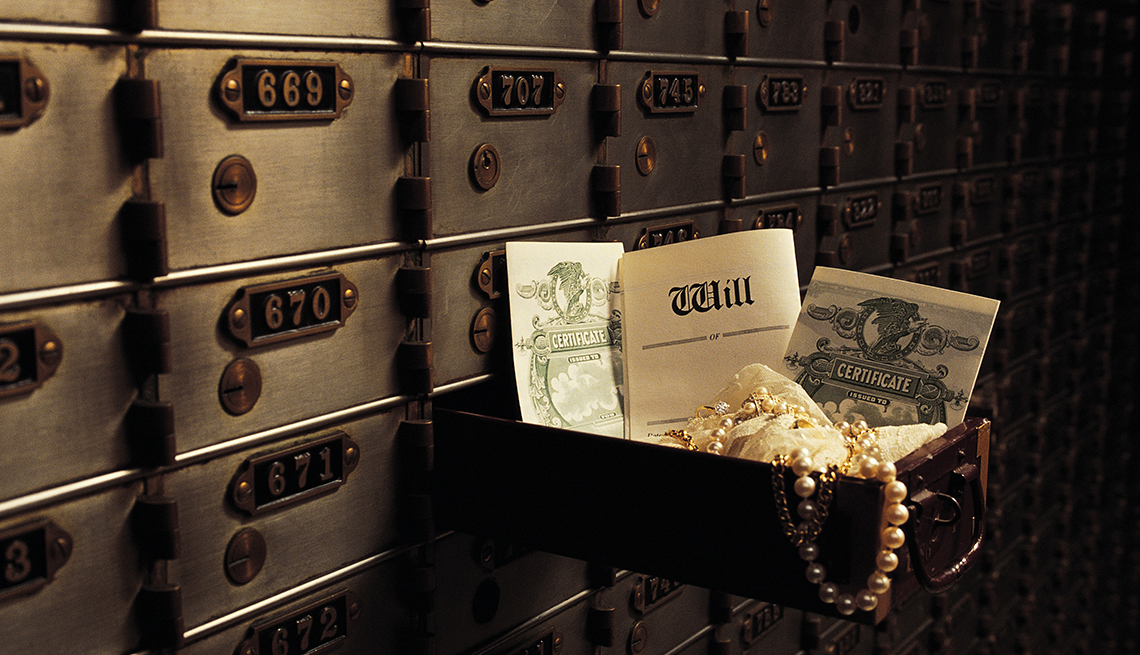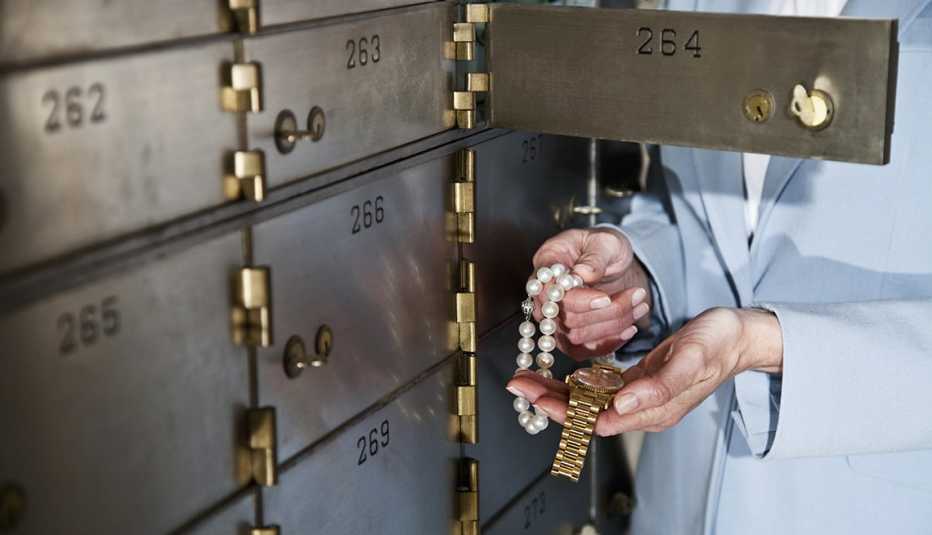AARP Hearing Center
Many people get a safe-deposit box at some point in their lives, and some forget about them entirely — and that could be a big mistake. If you haven't visited your safe-deposit box recently, perhaps you should.
The nation's 25 million safe-deposit boxes house whatever is valuable to the owner — which can be everything from gold bars to a baby's umbilical cord, says David McGuinn, president of Safe Deposit Specialists in Houston. If you haven't visited your safe-deposit box in a while — or if you inherit one — you may find some pleasant surprises. Here are a few potentially valuable things that you should check for:
1. Stock certificates
Very few companies still issue paper stock certificates. Most investors hold their shares electronically at brokerage houses. But you may have been issued stock certificates in the past and put them away in your safe-deposit box. Some could be quite valuable.
For example, the Walt Disney Co.'s stock certificates were printed with a picture of its founder, Walt Disney, surrounded by his most famous cartoon characters. Many people bought a few shares of the stock just for the certificate. Disney stopped issuing paper certificates in 2013. Shares bought at the end of 2012 for $52 would be worth $176 today.
Very old certificates require research — not only to see if the company still exists, but also if it was purchased by another company and still has some value. You can do some research via Google or Dun & Bradstreet to see if the company is still around but perhaps operating under a different name. You can also hire a research company, such as RM Smythe or OldStockResearch.com.
Even if the company has shuffled off to Palookaville, the certificate itself may have value as a collectible. For example, a 2000 certificate from collapsed energy company Enron (signed by then-chairman Kenneth Lay) currently sells for $250. A stock certificate issued by defunct search company Ask Jeeves sells for $80.
2. Savings bonds
If you've forgotten about your U.S. savings bonds, you can be forgiven. Series EE bonds were long a popular way to save — at least until interest rates fell to historically low levels more than a decade ago in the wake of the Great Recession. Current EE savings bonds yield just 0.10 percent. Nevertheless, the Treasury Department guarantees your savings bond will be worth at least twice the amount you paid for it after 20 years, which is an average annual return of about 3.5 percent.





































































